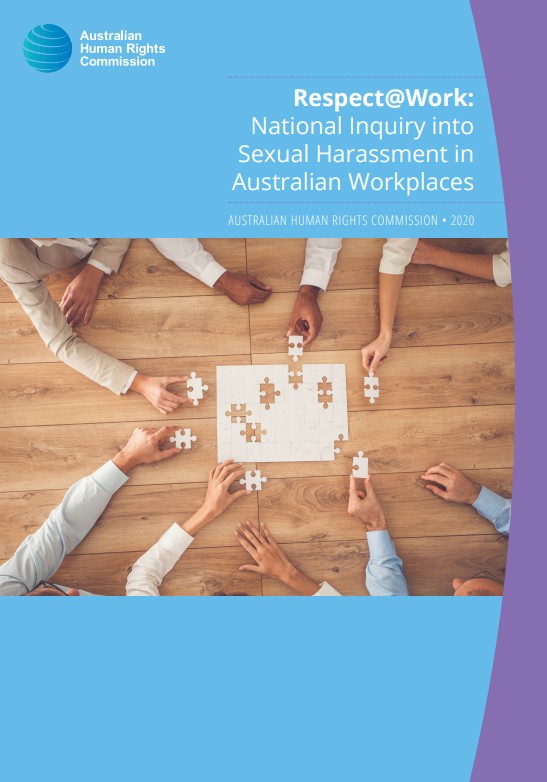An Introduction to Being an Active Bystander
From observer to changemaker
I’ve watched key leaders stay silent during inappropriate behaviour for years before realising they were actually part of problem.
Not a great statistic, but there it is. Countless meetings where someone made dodgy comments. Team situations where people got excluded or picked on. Moments where people knew something wasn’t right but told themselves “it wasn’t my place to say anything”.
Classic bystander effect in action. The more people around, less likely anyone does anything. Everyone assumes someone else will handle it.
Diffusion of responsibility they call it.
Thing is though, being an active bystander isn’t about being perfect or fearless. It’s about making conscious choices to contribute positively to workplace culture when it matters. About shifting from observer to participant in creating workplaces where everyone can thrive.
Been working in workplace training for over decade now and honestly? Transformation from passive to active bystander is one of most powerful changes I see in organisations. Not talking about dramatic confrontations or heroic interventions. Talking about small, consistent choices that add up to massive cultural shifts.
Australian workplaces desperately need more people willing to step up when it matters. Recent changes to legislation around positive duty requirements mean organisations can’t ignore this stuff anymore. But beyond legal obligations, it’s about creating environments where people feel safe, valued, respected.
Being an active bystander isn’t extra responsibility on top of your job. It’s part of being professional colleague who cares about workplace culture and other people’s wellbeing.
Start your online course here or contact us here.
What does being an active bystander actually mean?
Active bystander is someone who witnesses inappropriate behaviour and chooses to intervene rather than stay silent.
Not talking about passive observer who sees stuff happening and hopes someone else deals with it. Talking about proactive person who recognises their power to influence workplace dynamics and chooses to use it positively.
Being an active bystander means shifting from “not my problem” to “my workplace, my responsibility.” Means understanding that workplace culture gets created through countless individual moments where people either speak up or stay quiet.
Active bystanders are essentially observers who make conscious choice to act with confidence, empathy, paying attention to social cues. They assess risks, make safe and effective decisions. Notice body language, tone of voice, impacts of words and actions on others.
Key thing is choice. Everyone witnesses inappropriate behaviour at work sometimes. Difference between passive and active bystander is what they choose to do with that information.
Active bystanders attempt to communicate effectively with all parties involved. Seek help when necessary. Contribute to safe working environment. Aware of own biases, notice unacceptable cultural norms, identify inappropriate behaviours.
Sometimes called ethical bystanders or upstanders. Whatever you call them, they’re people who’ve decided their discomfort with intervention matters less than impact of staying silent.
Being an active bystander involves more than just trying to “do no wrong.” Involves actively intervening when you see others doing or saying something inappropriate. Proactive rather than reactive.
Don’t need special training or authority to be active bystander. Need willingness to step up when situations require it. Need commitment to workplace culture where everyone feels safe and valued.
Being an active bystander is about keeping others accountable to upholding acceptable workplace culture standards. About choosing to be part of solution rather than part of problem.
Why being an active bystander matters for workplace culture
Seen workplaces completely transform when just few people started being active bystanders consistently. Creates ripple effects that fundamentally change how organisations operate.
First up, active bystanders contribute to workplace culture encouraging respect and collaboration. Speaking up against problematic behaviour creates atmosphere where everyone feels safe and supported. Simple but powerful.
Active bystanders prevent physical violence and other aggressive behaviours by stopping situations from escalating. Ensures safety of colleagues. Most workplace violence doesn’t happen suddenly – builds up through series of incidents that get ignored or tolerated.
Protect employees from bullying and harassment by standing up for colleagues and holding perpetrators accountable. Bullying thrives in environments where bystanders stay silent. Active intervention disrupts those dynamics.
Foster culture of open communication. When people see colleagues willing to speak up about problems, creates psychological safety for others to raise concerns too. Communication improves across organisation.
Contribute to more diverse and inclusive work environments. Active bystanders advocate for underrepresented groups, challenge discriminatory behaviours like taunts with direct reference to religion or race. Inclusion requires action, not just good intentions.
Help reduce employee stress and anxiety in workplace. When people know colleagues will intervene if they witness problems, reduces constant vigilance and worry. Improves employee satisfaction and wellbeing significantly.
Demonstrate commitment to colleagues’ wellbeing. Strengthens team bonds and collaboration. People trust each other more when they know team members have their backs.
Exemplify moral courage by standing up for what’s right even when difficult or uncomfortable. Inspires others to do same, leading to more ethical work environment. Courage is contagious.
Demonstrate sense of responsibility for colleagues and overall work environment. Level of responsibility empowers others to contribute positively too. Creates upward spiral of accountability.
Reduce risk of legal action associated with workplace misconduct. Ultimately protects company’s reputation. Organisations with strong bystander cultures face fewer formal complaints and legal challenges.
Start your online course here or contact us here.
Essential skills for being an active bystander
Skills for being an active bystander aren’t natural talents. They’re learned through practice and sometimes getting it wrong.
Learning about potential issues and situations that could arise is huge. Knowledge helps identify when intervention necessary, provides confidence to take action. Understanding signs of mental health issues, dynamics of bullying, patterns of discrimination helps recognise when someone needs support.
Developing effective communication skills crucial. Expressing yourself clearly and assertively helps navigate challenging situations, support those in need. Includes active listening, asking open-ended questions, using “I” statements to share observations and feelings.
Like saying “when this situation happens, I feel like I’m not valued” rather than accusatory language that puts people on defensive. More constructive dialogue and speaking up gets encouraged and modeled, more effective problem-solving and conflict resolution happens.
Understanding importance of consent and boundaries essential. Respecting others’ personal space and independence creates safe and supportive environment. Being aware of body language, tone of voice, impact of words and actions on others.
Risk assessment skills matter too. Active bystanders assess situations quickly, choose appropriate level of intervention. Sometimes direct confrontation appropriate, sometimes subtle redirection works better. Sometimes delegation to authority figures necessary.
Not being afraid to seek help from others when needed. May involve reporting concerns to management, seeking advice from colleagues, reaching out to professional support services. Knowing your limits, recognising when appropriate to involve others.
Conflict resolution techniques help de-escalate tense situations. Understanding how to calm situations down rather than make them worse. Sometimes intervention means stepping between conflicting parties, sometimes means redirecting conversation.
Building confidence through practice. Start with lower-stakes situations to develop skills and comfort levels. Success builds on success. Gradually tackle more challenging scenarios as capabilities develop.
Cultural awareness helps recognise inappropriate behaviours others might miss. Understanding different perspectives, experiences, backgrounds helps identify when someone might be feeling excluded or targeted.
Legal framework supporting active bystanders in Australia
Legal framework actually supports being an active bystander more than most people realise. Australian legislation creates both opportunities and obligations for active bystander behaviour.
Vicarious liability means employers legally responsible for actions of employees. Employers can be held legally responsible for discrimination or harassment in workplace. Must recognise and respond to incidents of harmful behaviours, proactively implement policies, systems, processes to minimise likelihood of these behaviours.
Means organisations must implement bystander intervention policies and training to help prevent and address harassment and discrimination. Required to hold you and others accountable for inappropriate behaviours. Employers can’t turn blind eye to inappropriate behaviours and neither should you.
Work Health and Safety Act 2011 governs responsibility of employers to ensure health and safety of workplace. Employees responsible for following policies and protocols put in place by organisation to keep themselves and colleagues safe. Being an active bystander often falls under these responsibilities.
Disability, Sex and Racial Discrimination Acts make it unlawful to discriminate on grounds of disability, sex, race, ethnicity. Discrimination behaviour shouldn’t be tolerated in organisations. Active bystanders play crucial role in challenging discriminatory behaviours.
Fair Work Act 2009 regulates rights and obligations of employer and employee relationship. Includes protections for employees who raise concerns about workplace behaviour.
Australian Human Rights Commission Act 1986 gives Human Rights Commission considerable powers, particularly relation to Sex Discrimination Act 1984. Recent reforms and amendments made November 2022 significant.
Document released December 2023 entitled “Guidelines for Complying with Positive Duty under Sex Discrimination Act 1984” gives Human Rights Commission powers to enforce compliance on organisations. Positive duty of care requires organisations take reasonable and proportionate measures to eliminate sex discrimination, sexual harassment, sex-based harassment, hostile workplace environments based on sex, related victimisation.
Most states have laws protecting bystanders, preventing retaliation and potential victimisation. Bystander victimisation refers to negative consequences experienced by individuals who witness or intervene in acts of bullying or harassment. Can include social isolation, verbal or physical abuse, threats of violence.
Legal protections exist to encourage active bystander behaviour rather than discourage it. These frameworks support intervention when done appropriately and professionally.
Start your online course here or contact us here.
Common barriers and how to overcome them
Everyone has barriers to being an active bystander. Key is recognising yours and working through them.
Fear of retaliation and career impact biggest barrier for most people. Worry about being labelled troublemaker, facing subtle punishment, damaging important relationships. Real concern in many workplaces, but legal protections exist and organisations increasingly value active bystanders.
Start by documenting what you witness. Build allies and support systems. Understand company policies and escalation procedures. Knowledge reduces fear and increases confidence.
Uncertainty about appropriate responses paralyses many potential active bystanders. Don’t know what to say, worry about making situation worse, unsure about boundaries and roles. Solution is education and practice.
Learn different intervention techniques. Practice responses in safe environments. Start with smaller situations to build skills and confidence. Perfect response doesn’t exist, but appropriate response usually better than no response.
Diffusion of responsibility in groups makes everyone assume someone else will handle situation. Counter this by taking personal responsibility. Think “if not me, who?” rather than hoping someone else intervenes.
Assign yourself specific role in group settings. Decide beforehand you’ll be person who speaks up if inappropriate behaviour occurs. Makes intervention feel like responsibility rather than choice.
Social pressure to maintain harmony and avoid conflict stops many people from speaking up. Challenge this by reframing conflict. Addressing inappropriate behaviour isn’t creating conflict, it’s addressing conflict that already exists.
Maintaining harmony at expense of people’s safety and dignity isn’t real harmony. It’s enabling dysfunction. True workplace harmony comes from addressing problems constructively.
Power dynamics make intervention feel impossible when inappropriate behaviour comes from authority figures. Find alternative approaches like documenting incidents, seeking advice from HR, building coalitions with colleagues.
Remember that intervention doesn’t always mean direct confrontation. Can involve supporting targets privately, reporting through appropriate channels, seeking guidance from higher authorities.
Getting started: your first steps toward being an active bystander
Journey of being an active bystander starts with single small step, not dramatic transformation.
Begin by increasing awareness of workplace dynamics around you. Start noticing inappropriate behaviours you might have previously ignored or normalised. Paying attention is first step toward intervention.
Practice intervention skills in low-stakes situations. Someone makes mildly inappropriate joke in small group setting? Perfect opportunity to try redirecting conversation or expressing discomfort. Build confidence through success in manageable scenarios.
Learn your organisation’s policies and procedures for reporting concerns. Understand escalation pathways, know who to contact for different types of issues. Knowledge reduces uncertainty and increases likelihood of appropriate action.
Find allies and support systems. Identify colleagues who share your values and commitment to respectful workplace culture. Having support makes intervention feel less isolated and risky.
Start conversations about workplace culture with trusted colleagues. Discuss shared values and expectations. Create informal networks of people committed to active bystander behaviour.
Attend training sessions when offered. Read resources about intervention techniques. Education builds skills and confidence essential for effective active bystander behaviour.
Set personal boundaries and standards. Decide what behaviours you won’t tolerate in your presence. Having clear standards makes intervention decisions easier in moment.
Practice self-care and stress management. Being an active bystander can be emotionally demanding. Taking care of yourself ensures you can continue showing up for others.
Remember that being an active bystander is journey, not destination. Skills develop over time, confidence builds through experience. Don’t expect perfection immediately.
Start where you are, with skills you have, in situations that feel manageable. Every appropriate intervention matters, regardless of how small it might seem.
Being an active bystander isn’t about being hero or perfect colleague. It’s about making conscious choice to contribute positively to workplace culture when opportunities arise. About being person you’d want to work alongside.
Start your online course here or contact us here.









